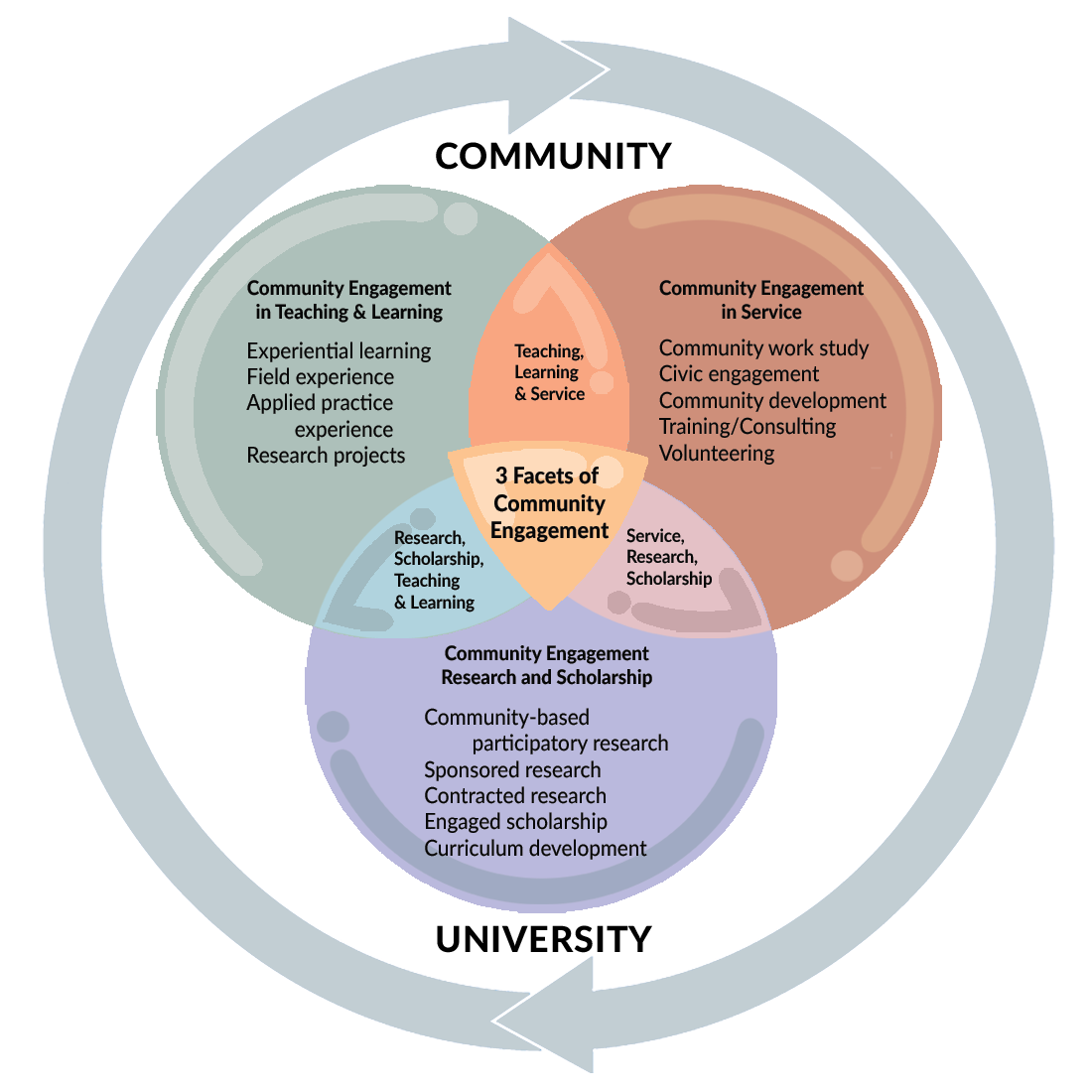
"Community-engaged Learning (synonymous with Community-based Learning) denotes academically-based community-engaged courses that may integrate a range of teaching and learning strategies, including, but not limited to service-learning, Co-op, externship, internship, practicum, clinical, capstone, research project, public service, practice-based learning, experiential education, and experiential learning."
Community-engaged projects involve learners in experiences that benefit the community while simultaneously advancing the goals of a particular curriculum. When paired with structured preparation and reflection, learners are offered tangible opportunities to directly apply theoretical concepts to real-world situations. See below for notable qualities of community-engaged learning, developed by the University of Washington.
Qualities of community-engaged projects
- Integrative: Beyond traditional classroom learning, practicum training, and off-campus volunteering, community-engaged projects thoughtfully integrate class learning objectives, instructor guidance, and community perspectives and priorities. When engaged in genuine service, learners participate as both learners and community members, demonstrating growth both academically and interpersonally.
- Reflective: Reflection is a core component of community-engaged learning projects. Providing structured opportunities for learners to critically reflect upon their service experience can facilitate an even deeper impact of the learning experience and requisite takeaways.
- Contextualized: Community-engaged projects provide learners with unique opportunities to connect theoretical classroom knowledge with knowledge and expertise residing within community contexts. Working with experienced community members and other professionals, community-engaged projects strengthen the learning experience by immersing learners in the unpredictable and complex nature of real-world problem-solving and by constructing learning where responses can be immediate and uncontrived.
- Strength-based: A strength-based approach focuses on the capacity, expertise, strengths, and resources that exist in every community, as opposed to centering on what is absent. By shifting away from a deficit mentality, learners engage in partnership strategies to identify, amplify, and further develop each community’s unique strengths.
- Reciprocal: Community-engaged projects offer all parties involved some type of benefit. Learners give time, effort, and intellectual capital in order to gain a deeper understanding of course concepts and the intersectional nature of social issues. Community members and organizations invest time as co-educators and in turn, accomplish more toward their mission and goals.
- Lifelong: Community-engaged projects involve experiences that encourage a lifelong posture of learning. Through a meaningful synthesis of theory and practice, community-engaged projects provide a distinctive, relevant, and influential experience. Community-engaged projects facilitate building relationships, problem-solving, the heightened value on community, and increased self-awareness.
Adapted from Center for Teaching and Learning (CTL), UW, 2012. Contributors: M. Clevenger-Bright, K. Hays, L. Henricksen, D. Hlebain, J. Maglalang, M. Packard, K. Pursch Cornforth, D. Raftus.
Ways to Integrate Community Engagement into an Existing Course

Adapted from a Model of Community Engagement at Mississippi State University and from Linking Scholarship and Communities: Report of the Commissions on Community-Engaged Scholarship in the Health Professions
Accessible text for Three Facets of Community Engagement chart.
Resources
Bandy, J. (2011). What is Service Learning or Community Engagement? Vanderbilt University Center for Teaching.

